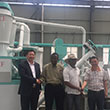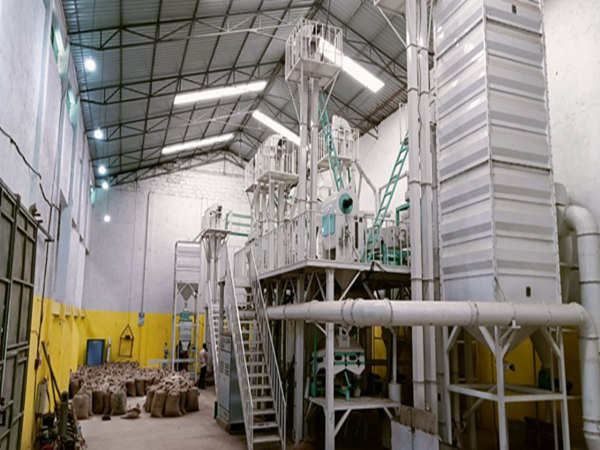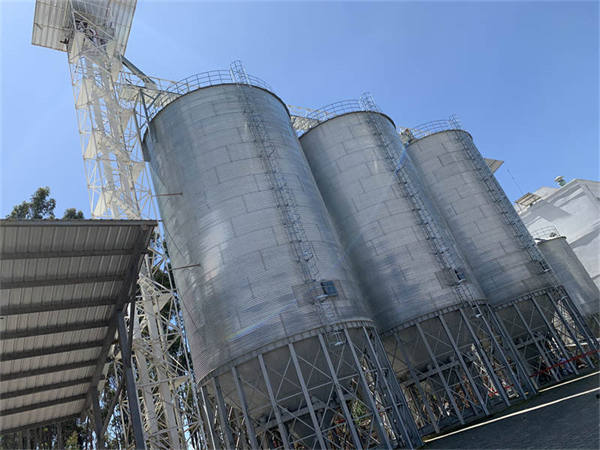How Does a Grain Milling Machine Work? Unveiling the Inner Workings with WIN TONE MACHINERY
SynopsisHow does a grain milling machinGrain milling machines play a crucial role in the food processing industry, transforming grains into various products, such as flour, meal, and feed. e work?
Introduction:
Grain milling machines play a crucial role in the food processing industry, transforming grains into various products, such as flour, meal, and feed. Understanding how these machines work is essential for maximizing efficiency and ensuring high-quality output. In this article, we will delve into the inner workings of grain milling machines, shedding light on their key components and processes. With WIN TONE MACHINERY as your guide, you will gain a comprehensive understanding of how these machines operate.
1. Understanding the Grain Milling Process:
The grain milling process begins with the cleaning and preparation of the raw grains. The grains are inspected, cleaned to remove any impurities, and then stored in silos or bins. Once prepared, the grains are fed into the milling machine, where they undergo a series of processes to break them down into their desired form, whether it be flour, meal, or feed.
2. Key Components of a Grain Milling Machine:
a) Hopper: The hopper is the entry point where the raw grains are loaded into the machine. It securely holds and controls the flow of grains into the milling chamber.
b) Vibratory Feeder: The vibratory feeder ensures a consistent and even flow of grains into the milling chamber, preventing clogging and ensuring smooth operation.
c) Milling Chamber: The milling chamber is the heart of the machine. It consists of a series of rollers or grinding plates that crush, grind, or roll the grains to the desired particle size. The size of the milling chamber can vary depending on the specific machine and the type of grain being processed.
d) Screens or Sieves: Screens or sieves are installed in the milling chamber to control the size of the final product. The grains are sieved through various screen sizes to achieve the desired particle size distribution.
e) Airflow System: Many milling machines are equipped with an airflow system that helps separate the lighter components, such as bran or chaff, from the heavier product, ensuring a clean and refined final output.
f) Collection System: The collection system collects the final product, such as flour or meal, and delivers it to a storage container or packaging area.
3. Different Milling Techniques:
a) Impact milling: This technique involves the grains being repeatedly struck by hammers or pins, breaking them down into smaller particles.
b) Shearing milling: Shearing milling utilizes a series of blades or cutters that rotate at high speeds, cutting the grains into smaller pieces.
c) Roller milling: Roller milling involves passing the grains between two rollers or grinding plates. The gap between the rollers determines the particle size of the final product.
d) Abrasive milling: Abrasive milling uses abrasive surfaces to grind the grains, producing fine flour or meal.
4. How WIN TONE MACHINERY's Grain Milling Machines Work:
WIN TONE MACHINERY offers a range of advanced and efficient grain milling machines designed to deliver optimal performance and consistent product quality. Our machines utilize a combination of techniques, such as impact milling, roller milling, and sieving, to achieve the desired particle size distribution. The precise engineering of our milling machines ensures uniformity in processing and minimizes grain losses. With features like adjustable grinding settings, airflow systems, and robust collection systems, our machines deliver superior results while maximizing productivity.
5. Benefits of WIN TONE MACHINERY's Grain Milling Machines:
a) High Efficiency: WIN TONE MACHINERY's milling machines are designed for efficient grain processing, facilitating high throughput and minimizing production time.
b) Superior Product Quality: Our machines ensure that the final product maintains its nutritional value, texture, and taste, meeting the stringent requirements of customers and regulatory standards.
c) Ease of Use and Maintenance: Our milling machines are user-friendly, featuring intuitive controls and simple maintenance procedures. This ensures smooth operation and minimizes downtime.
d) Customizability: We understand that different grains have specific processing requirements. That's why our milling machines can be customized to suit various grains and desired output specifications.
Conclusion:
Grain milling machines are intricate systems that combine various components and techniques to transform raw grains into valuable products. Understanding their inner workings is essential for optimizing efficiency, achieving high-quality output, and maximizing productivity. WIN TONE MACHINERY's expertise and advanced milling machines empower you with the knowledge and technology needed to excel in the grain processing industry. Contact WIN TONE MACHINERY today and let us guide you towards success with our cutting-edge grain milling solutions!











Leave a reply